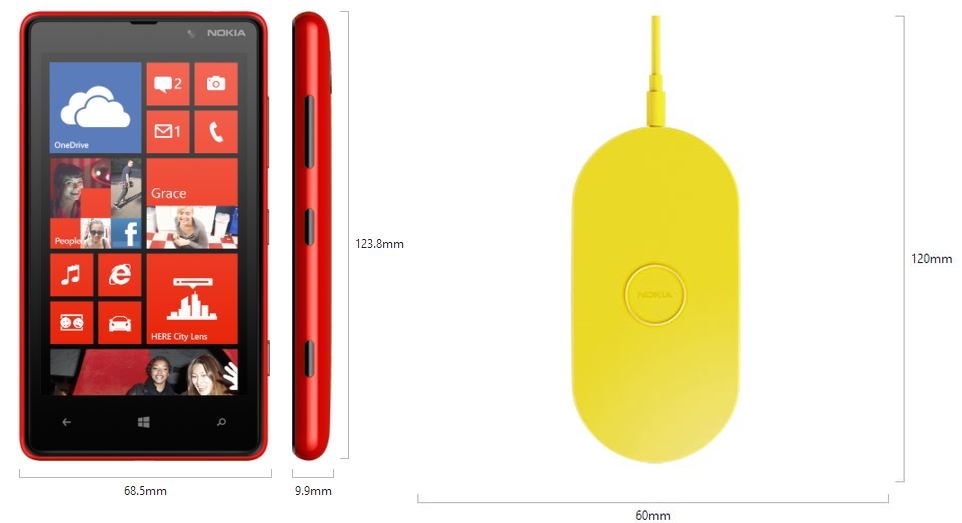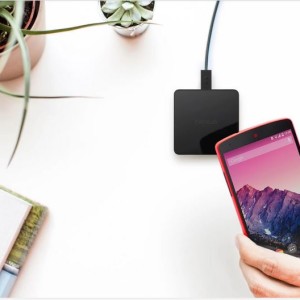 The first thing that comes to mind when you read wireless charging is that of a phone magically charging the moment you’re in a particular zone; just like Wi-Fi. Sadly that’s not how wireless charging works in the present day. You need a charging base on which you need to place a wireless charging compatible phone and it starts charging. It works on the principle of inductive charging — where in the charging base and the phone has coils to transmit energy without having to connect any cable to the phone.
The first thing that comes to mind when you read wireless charging is that of a phone magically charging the moment you’re in a particular zone; just like Wi-Fi. Sadly that’s not how wireless charging works in the present day. You need a charging base on which you need to place a wireless charging compatible phone and it starts charging. It works on the principle of inductive charging — where in the charging base and the phone has coils to transmit energy without having to connect any cable to the phone.
Quite a lot of manufacturers attempted to crack the market and introduce wireless charging. Nokia launched the Lumia 820 and Lumia 920 which supported wireless charging and Google did the same with the Nexus 4 and its successor the Nexus 5. No matter how hard these manufacturers tried the concept of wireless charging never took off. I’ll give you five reasons why Wireless Charging never caught on.
Charger Bundling
Most of us only use the accessories we get with our phones. Though buying a better pair of headphones is common, rarely you’ll see someone buying different chargers. Manufacturers almost never bundled wireless chargers with phones that supported it. Naturally, people never bought this accessory that costed at least 4 times the cost of a typical charger. While typical wire chargers cost usually under Rs. 1,000, the Nokia DT 900 was priced at Rs. 4,000 and the fancier “Fatboy” charger (that looked like a pillow) was priced at Rs. 5,500. Google also has a wireless charger for the Nexus devices which is on sale for Rs. 3,300 on the Google Play Store. Many don’t see the value in this purchase because this isn’t really “true” wireless charging, since these chargers need to be connected to a power source at the end of the day.
Limited handsets
Android is the most widely used OS today because of various manufacturers coming forward and adopting it. Sadly it was not the case for wireless charging, a select few manufacturers adopted the tech. Key players like HTC and Sony never introduced wireless charging in any of their phones. Samsung has made their phone wireless charging ready, so you’ll still need to buy additional accessories (like a backplate) to enable it.
Time
After burning a hole in your pocket to buy a wireless charger for the tiny convenience it offers, be ready to wait longer for the phone to charge. These wireless chargers supply power at a lower current to prevent phones from overheating. For example charging a Nexus 5 by the Google Wireless charger takes 50 minutes longer than charging via the bundled wire charger. Also, the charging time varies for different chargers. Then there’s another problem — if you don’t position the phone right, it won’t charge. Imagine that FML moment when you wake up in the morning to see the phone at 5% battery, just because it wasn’t placed properly.
Portability
 By now you know why wireless chargers never sold in huge numbers. These chargers are bigger in size when compared to a typical charger. For e.g, the Nokia DT-900 dimensionally is as big as a mobile phone. Next, these wireless bases still need a wall adapter to supply power. So, long story short you need to carry a wall adapter and the charging base to charge the phone. So this is only convenient when used at home next to the bed.
By now you know why wireless chargers never sold in huge numbers. These chargers are bigger in size when compared to a typical charger. For e.g, the Nokia DT-900 dimensionally is as big as a mobile phone. Next, these wireless bases still need a wall adapter to supply power. So, long story short you need to carry a wall adapter and the charging base to charge the phone. So this is only convenient when used at home next to the bed.
Standardisation
Standardisation of a particular technology helps it become mainstream. Take WiFi for example — today, any WiFi-enabled device can connect to a WiFi router made by any manufacturer to get the job done. The first company to offer wireless charging was Palm Inc. with a charger called the “Touchstone”. It was a unique standard for charging, unlike the Qi (pronounced “Chee”) that is more popular today and used in recent phones like the LG G3 and Nokia Lumia 1520. Rezenceand the Power Matters Alliance are the other wireless charging standards currently available in the market.
The concept of wireless charging is neat and certain applications make the experience absolutely seamless (just see how the JBL dock was designed to work with a combination of wireless charging, NFC and Bluetooth). But for full-scale adoption, we think standardisation, within-the-box bundling and reasonable price-points are the only ways to save this concept from extinction.


Comments
3 responses to “5 Reasons why Wireless Charging Never Caught on”